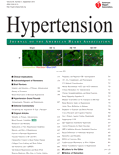Circulation:老年患者生物瓣和机械瓣置换治疗的长期安全性和有效性
2013-05-03 Circulation dxy
图注:机械瓣和生物瓣患者死亡率(危险因素校正后),主动脉瓣膜置入初,生物瓣治疗患者较机械瓣膜患者再手术风险高。尽管两组总体死亡率相似,超过9年的生物瓣患者相对死亡风险高于机械瓣患者。AV表示主动脉瓣;AVRR表示主动脉瓣修复或置换;Bio代表生物瓣;Mech代表机械瓣。 近年来越来越多老年人接受主动脉瓣置换术治疗,由于机械瓣的血栓风险,生物瓣膜是一个替代选择方案。当前在老年患者中比较生物瓣和机械

图注:机械瓣和生物瓣患者死亡率(危险因素校正后),主动脉瓣膜置入初,生物瓣治疗患者较机械瓣膜患者再手术风险高。尽管两组总体死亡率相似,超过9年的生物瓣患者相对死亡风险高于机械瓣患者。AV表示主动脉瓣;AVRR表示主动脉瓣修复或置换;Bio代表生物瓣;Mech代表机械瓣。
近年来越来越多老年人接受主动脉瓣置换术治疗,由于机械瓣的血栓风险,生物瓣膜是一个替代选择方案。当前在老年患者中比较生物瓣和机械瓣长期安全性和有效性的研究较少,研究人员对美国胸外科医师学会成人心脏病手术数据库(the Society of Thoracic Surgeons Adult Cardiac Surgery Database)的有医疗保险患者进行分析,评价这些机械瓣和生物瓣患者长期死亡率和瓣膜相关并发症情况;并在亚组患者进行进一步分析。
研究人员对其中的1991年至1999年间在605家中心接受主动脉瓣置换术患者(65-80岁)进行随访,其中有24410例患者使用的是生物瓣膜,有14789例患者采用机械瓣。随访平均时间为12.6年(最长17年,最短 8年)。通过倾向性评分方法比较分析两组患者的预后情况。
患者接受主动脉置换术时平均年龄为73岁,12年中需再手术(4.0%)和发生心内膜炎(1.9%)并不常见;但其他不良预后发生较多,包括死亡(66.5%)、卒中(14.1%)和出血(17.9%)。与机械瓣患者相比较,生物瓣患者死亡率相似(校正后,危险比HR=1.04,95% CI 1.01–1.07),再手术(HR=2.55,95% CI 2.14–3.03)和心内膜炎(1.60; 95% CI 1.31–1.94)风险较高,卒中(HR=0.87; 95% CI 0.82–0.93)和出血(HR= 0.66; 95% CI 0.62–0.70)风险较低。
各个亚组分析结果与上述结果大体一致,其中使用生物瓣患者(65-69岁)12年的再次手术绝对风险升高(10.5%)。
研究人员最后指出,接受主动脉瓣置换术的患者,不管是使用生物瓣还是机械瓣,长期死亡率相似。其中,生物瓣患者有较高长期再次手术和心内膜炎风险,但卒中和出血风险较低。
总而言之,人工瓣膜的安全性和有效性很大程度上取决于患者的年龄和合并症情况。研究强调了医生和患者在瓣膜置换前认真讨论和交流的必要性,针对患者个体的不同情况作出合适的选择。
与主动脉相关的拓展阅读:
- Ann Throac Surg:一种新的瓣保留主动脉根部置换术
- AHJ:主动脉内球囊反搏增加PCI患者住院死亡率
- Diabetes Care:长期高血糖增加T1DM患者升主动脉僵硬度
- JACC:经导管主动脉瓣置入(TAVI)可用于主动脉瓣反流
- Circulation:成人分散性主动脉瓣下狭窄预后特征分析
- Nat med:尼古丁促腹主动脉瘤形成 更多信息请点击:有关主动脉更多资讯

Long-term safety and effectiveness of mechanical versus biologic aortic valve prostheses in older patients: results from the society of thoracic surgeons adult cardiac surgery national database.
BACKGROUND
There is a paucity of long-term data comparing biological versus mechanical aortic valve prostheses in older individuals.
METHODS AND RESULTS
We performed follow-up of patients aged 65 to 80 years undergoing aortic valve replacement with a biological (n=24 410) or mechanical (n=14 789) prosthesis from 1991 to 1999 at 605 centers within the Society of Thoracic Surgeons Adult Cardiac Surgery Database using Medicare inpatient claims (mean, 12.6 years; maximum, 17 years; minimum, 8 years), and outcomes were compared by propensity methods. Among Medicare-linked patients undergoing aortic valve replacement (mean age, 73 years), both reoperation (4.0%) and endocarditis (1.9%) were uncommon to 12 years; however, the risk for other adverse outcomes was high, including death (66.5%), stroke (14.1%), and bleeding (17.9%). Compared with those receiving a mechanical valve, patients given a bioprosthesis had a similar adjusted risk for death (hazard ratio, 1.04; 95% confidence interval, 1.01-1.07), higher risks for reoperation (hazard ratio, 2.55; 95% confidence interval, 2.14-3.03) and endocarditis (hazard ratio, 1.60; 95% confidence interval, 1.31-1.94), and lower risks for stroke (hazard ratio, 0.87; 95% confidence interval, 0.82-0.93) and bleeding (hazard ratio, 0.66; 95% confidence interval, 0.62-0.70). Although these results were generally consistent among patient subgroups, bioprosthesis patients aged 65 to 69 years had a substantially elevated 12-year absolute risk of reoperation (10.5%).
CONCLUSIONS
Among patients undergoing aortic valve replacement, long-term mortality rates were similar for those who received bioprosthetic versus mechanical valves. Bioprostheses were associated with a higher long-term risk of reoperation and endocarditis but a lower risk of stroke and hemorrhage. These risks varied as a function of a patient's age and comorbidities.
本网站所有内容来源注明为“梅斯医学”或“MedSci原创”的文字、图片和音视频资料,版权均属于梅斯医学所有。非经授权,任何媒体、网站或个人不得转载,授权转载时须注明来源为“梅斯医学”。其它来源的文章系转载文章,或“梅斯号”自媒体发布的文章,仅系出于传递更多信息之目的,本站仅负责审核内容合规,其内容不代表本站立场,本站不负责内容的准确性和版权。如果存在侵权、或不希望被转载的媒体或个人可与我们联系,我们将立即进行删除处理。
在此留言









#机械瓣#
57
#置换#
73
#安全性和有效性#
75
#生物瓣#
60
#置换治疗#
115
#长期安全性#
70